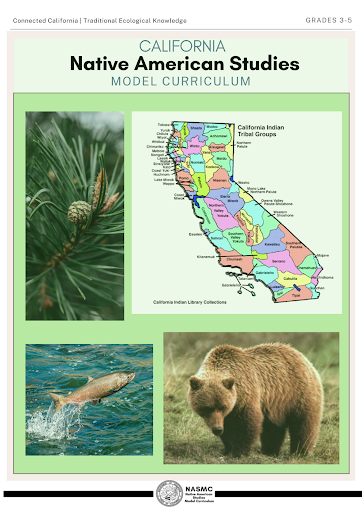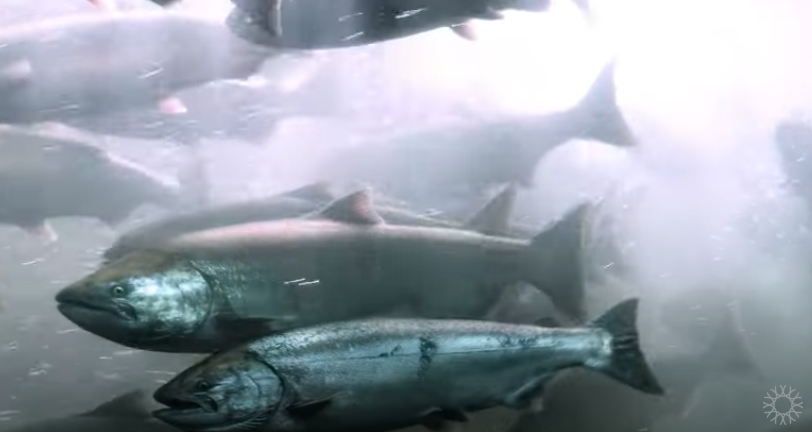Overview
Saving Salmon and the Yurok Tribe

Authors: The Connected California: Preservation and TEK (Yurok) Unit was researched, authored, and edited by the California Indian Museum and Cultural Center, California Indian Education for All, and the San Diego County Office of Education. Additionally the videos from this unit come from the California Academy of Sciences. The California Academy of Sciences is a renowned scientific and educational institution dedicated to regenerating the natural world through science, learning, and collaboration. Based in San Francisco’s Golden Gate Park, it's the only place in the world to house an aquarium, planetarium, rainforest, and natural history museum, plus cutting-edge research programs, all under one living roof. The unit resources were designed and created from funding through the California Department of Education’s Native American Studies Model Curriculum grant and contract.

Connected California: Preservation and TEK (Yurok) Unit (Lesson 3 of 4)
- Lesson 1 : Soaring with the California Condor
- Lesson 2 : Sea Star Spawning and Yurok Tribe Conservation Efforts
- Lesson 3 : Saving Salmon and the Yurok Tribe
- Lesson 4: Restoring Cache Creek and the Yurok Tribe
Grades: 3-5
Suggested Amount of Time: Two 60 minute sessions
Curriculum Themes:
- History
- Relationship to Place
- Cross Curricular Integration
Lesson Highlights
- This lesson focuses on the cultural and ecological importance of salmon to the Yurok people.
- Students examine how environmental changes and human activities have affected salmon populations.
- Through multimedia and collaborative projects, students explore salmon life cycles, conservation strategies, and the Yurok Tribe’s role in restoration efforts.
Lesson Objectives
- Students will understand the importance of salmon to the Yurok Tribe and the ecosystem.
- Students will learn how environmental changes and human activities have impacted salmon populations.
- Students will investigate the life cycle of salmon and the challenges they face.
- Students will explore how the Yurok Tribe combines traditional ecological knowledge with modern conservation efforts to restore salmon populations.
- Students will create a project that educates others on salmon conservation and its significance to both the environment and Yurok culture.
Teacher Background
Essential Understandings of California Indian History and Culture
Essential Understanding 1: Great Diversity Among Tribes (EU1 Video) https://bit.ly/NASMC_EU1
Essential Understanding 2: Diversity Among Identity (EU2 Video) https://bit.ly/NASMC_EU2
Essential Understanding 3: Native Traditional Beliefs (EU3 Video) https://bit.ly/NASMC_EU3
Essential Understanding 4: Policies that Affected Tribes (EU4 Video) https://bit.ly/NASMC_EU4
Essential Understanding 6: History from a California Indian Perspective (EU6 Video) https://bit.ly/NASMC_EU6
Unit Background
The Connected California: Preservation and TEK (Yurok) Unit is an interdisciplinary environmental education unit designed for grades 3–5 that centers Yurok Tribal knowledge and stewardship practices within the study of science, social studies, and environmental conservation. Developed by the California Indian Museum and Cultural Center, California Indian Education for All, and the San Diego County Office of Education featuring video content from the California Academy of Sciences, this unit highlights the integration of Traditional Ecological Knowledge (TEK) and modern science in sustaining ecosystems, cultural lifeways, and biodiversity.
Through four engaging, video-driven lessons, students explore the cultural and ecological importance of the California condor, sea stars, salmon, and Cache Creek. They investigate life cycles, environmental threats, and the ways the Yurok Tribe actively works to protect and restore these natural systems. Core themes include environmental relationships, cultural strengths, sovereignty, and Indigenous knowledge systems, all supported by the 5E instructional model: Engage, Explore, Explain, Elaborate, Evaluate.
Students engage in hands-on learning, reflection, collaborative projects, and advocacy-based activities, all grounded in the values of respect, reciprocity, and reverence. By the end of the unit, students will have deepened their understanding of the reciprocal relationships between people and place, the importance of cultural knowledge in conservation, and their own roles as stewards of the environment. Each lesson integrates video storytelling, scientific inquiry, Indigenous perspectives, and student-led advocacy, helping learners build deep connections between culture, place, and ecological responsibility.
Core Themes:
History and sovereignty
Cultural strengths and Indigenous knowledge systems
Environmental relationships and stewardship
Science, civics, and ELA integration
Students will:
Analyze environmental impact on Indigenous communities and ecosystems.
Identify ways communities can sustainably interact with coastal ecosystems.
Analyze the impact of restoration efforts on preserving history and supporting ecosystems.
Understand the characteristics and importance of desert ecosystems.
Explore Indigenous cultural perspectives and the environment.
Evaluate solutions for balancing conservation and human needs.
Express learning through art, reflection, and collaborative discussion.